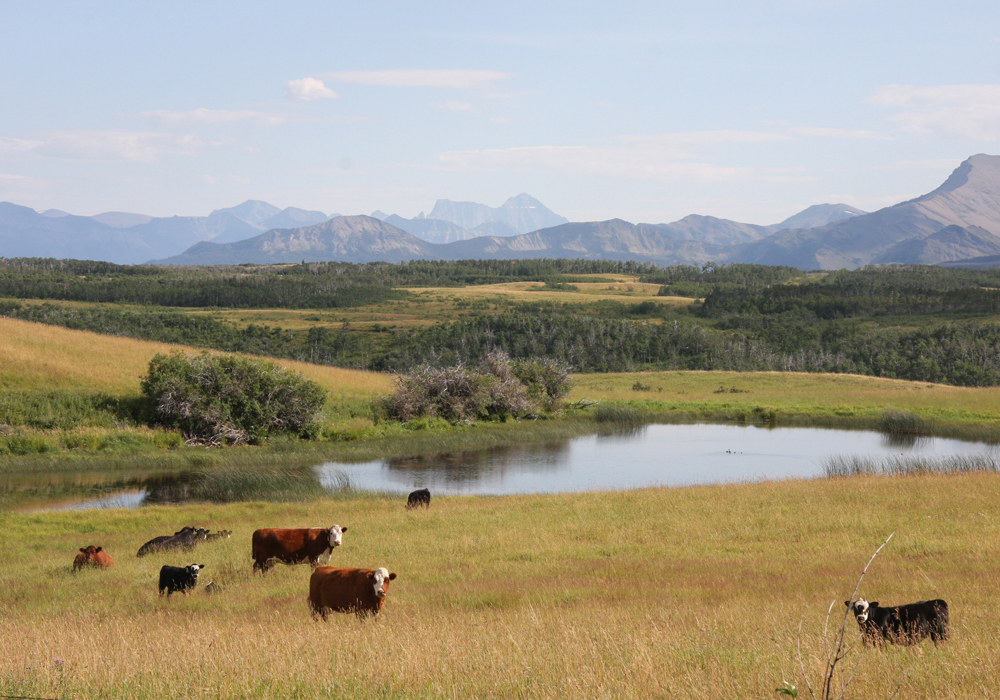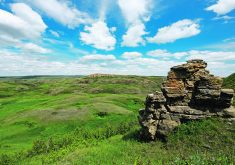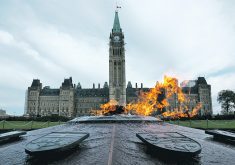The Alberta Wilderness Association says it is extremely difficult to access information about what public land is being sold
The Alberta Wilderness Association is calling for more transparency in public land sales to improve opportunities for those seeking to preserve native grasslands and forests to have a say before cultivation.
AWA conservation specialist Ruiping Luo said the decade-long issue regarding the sale of a quarter section of native grasslands near the Bow Island Provincial Grazing Reserve to SLM Spud Farms highlighted the issue.
Related story: Province introduces Crown land sales legislation
Read Also

Using artificial intelligence in agriculture starts with the right data
Good data is critical as the agriculture sector increasingly adopts new AI technology to drive efficiency, sustainability and trust across all levels of the value chain.
“A lot of public lands in less-developed areas do contain the native habitat that we are interested in protecting,” said Luo. “Public land is supposed to be a public resource. The Alberta government itself has said several times these are publicly managed and they are for the benefit of all Albertans. We’re not really seeing that in the way that the public land sales information as it’s difficult to access.”
In its recently released report on the issue, “Trends in Sales of Alberta Public Lands,” the AWA reviewed more than 5,300 records of land sales between 1990 and 2022. Some data were missing, including dates of sales and area of land sold.
But the overall trend of public land sales in the province has declined since peaking in 2011, both in number and area sold.
“We are grateful to see this information is available but it is really difficult to get, some of it is missing, some is unclear and this is not a transparent system,” said Luo. “A lot of these public land sales aren’t really discussed, there is no public input before they are sold or if there are any changes in management. It’s important to track public land sales to know what is going on with this pretty important resource.”
Native grasslands have been cited as particularly vulnerable because they are home to most of the province’s species at risk and about 75 percent has already been lost. Luo said more should be done to inform the public when such lands are being sold.
While some public lands could be effectively managed in private hands, that has to be weighed against the need to preserve native grasslands.
Breaking up those native grasslands for cultivation doesn’t serve that purpose, she said.
“A lot of it is really hard to recover. It has been there for hundreds or thousands of years and it’s pretty hard to recover it to a native state and to that state where it will support that same level of biodiversity,” said Luo. “There are a lot of benefits of native grasslands that might not be so clear.”
That includes carbon storage, water filtration and mitigation against flooding.
“As we’re losing native grasslands, we’re losing a lot of these services,” said Luo. “Public lands for community pastures do tend to keep grasslands in a relative unconverted state. They keep the native plants in the area and keep a lot of the biodiversity intact.”
The issue isn’t exclusive to the southern portion of the province because much of the current sales of public land is occurring in northern Alberta, specifically Mackenzie County and the boreal forests, according to the AWA report.
Luo said a centralized listing of public lands being offered for sale is one way to improve the process.
“Right now, it’s scattered among a few different real estate websites. At the very least, the government should keep and maintain a list of sales that are happening or will be happening and not just as the sale is happening,” said Luo. “Ideally, they should be open to take comments on this sale as it’s happening or before it happens.”
More information on the condition of the land and its planned use after the sale would be of use to the public, added Luo.
















